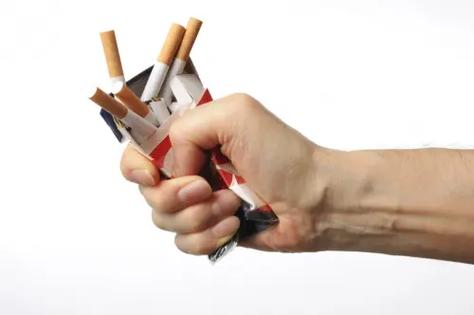The liver is one of the body's most resilient and hardworking organs, acting as a central processing unit for everything we consume. It filters toxins, metabolizes medications, produces essential proteins, and stores energy. Yet, this resilience has its limits. One of the most significant challenges it can face is drug-induced liver injury (DILI), a condition where medications or supplements, intended for healing, inadvertently cause harm to the liver itself. While the focus often falls on the offending drug, there's a silent, pervasive co-factor that can dramatically alter the course of recovery: tobacco use.

When we think about the dangers of smoking, lung cancer and heart disease immediately come to mind. The connection between tobacco and liver health, however, is less publicized but equally critical. For an individual navigating the complex journey of recovering from DILI, understanding this connection is not just academic; it's a vital component of the healing process. The chemicals in cigarette smoke do not simply pass through the lungs and into the bloodstream; they embark on a direct journey to the liver, where they interfere with its innate repair mechanisms. This interference creates a perfect storm, significantly prolonging the time it takes for the liver to recover and return to its normal, life-sustaining functions.
So, how exactly does a habit associated with the lungs impact an organ like the liver? The pathway is both direct and insidious. The liver is the body's primary detoxification center. Every time you inhale cigarette smoke, a cocktail of over 7,000 chemicals, including nicotine, tar, carbon monoxide, and numerous carcinogens, enters your bloodstream. The entire volume of blood in your body passes through the liver multiple times an hour. Consequently, the liver is tasked with processing this toxic onslaught, a job that requires significant energy and resources. When the liver is already injured and vulnerable from a DILI event, this additional toxic burden can overwhelm its compromised systems. It's like asking a construction crew to rebuild a damaged bridge while simultaneously fighting off a constant barrage of vandals. Progress becomes slow, inefficient, and often, incomplete.
At the cellular level, tobacco smoke wages a multi-front war on the liver's healing capacity. One of the primary mechanisms is the induction of oxidative stress. Metabolism within liver cells naturally produces unstable molecules called free radicals. In a healthy state, the body neutralizes them with antioxidants. Tobacco smoke, however, is a massive generator of free radicals, flooding the liver and creating a state of severe oxidative stress. This imbalance damages cell membranes, proteins, and even DNA within the liver cells (hepatocytes), hindering their ability to divide, regenerate, and repair the injury site. Imagine trying to heal a cut on your hand while constantly rubbing sandpaper on it; the wound remains inflamed and struggles to close.
Furthermore, tobacco smoke directly interferes with the intricate cytochrome P450 enzyme system. This family of enzymes, predominantly located in the liver, is responsible for metabolizing a vast array of drugs and foreign compounds. DILI often occurs when a drug is metabolized by these enzymes into a toxic byproduct. Tobacco smoke is a potent inducer of certain CYP enzymes, meaning it stimulates the liver to produce more of them. This heightened enzymatic activity can accelerate the conversion of a potentially hepatotoxic drug into its harmful metabolites, effectively increasing the severity of the initial injury. Even after the offending drug is stopped, the altered enzyme landscape, driven by ongoing smoking, can continue to affect the metabolism of other essential medications or even the body's own inflammatory mediators, disrupting the delicate balance needed for recovery.
Another critical way tobacco prolongs recovery is by promoting inflammation and fibrosis. A DILI event triggers a complex inflammatory response as the immune system tries to contain the damage. Nicotine and other components of smoke have been shown to dysregulate this immune response. They can amplify the production of pro-inflammatory cytokines, signaling molecules that perpetuate a state of chronic inflammation within the liver tissue. This persistent inflammation not only prevents healing but also actively encourages the activation of hepatic stellate cells. These are the cells responsible for producing collagen and other fibrous materials. When chronically activated, they lay down excessive scar tissue, a process known as fibrosis. Over time, this fibrosis can progress to cirrhosis, a severe and often irreversible scarring that permanently impairs liver function. Therefore, smoking doesn't just slow down healing; it actively pushes the injured liver toward a path of long-term, structural damage.
The vascular system of the liver also falls victim to tobacco's effects. The liver has a unique and rich blood supply, crucial for its filtering duties. Nicotine is a powerful vasoconstrictor, causing blood vessels to narrow. This reduces blood flow and oxygen delivery (a state known as hypoxia) to the already injured liver tissue. Oxygen is fundamental for cellular repair and energy production. By creating a hypoxic environment, tobacco smoke starves the struggling hepatocytes of the essential fuel they need to regenerate. This is akin to cutting off the power supply to a factory that is trying to repair its machinery; without energy, the work grinds to a halt.
Given this cascade of detrimental effects, the question for a patient recovering from DILI becomes straightforward: what can be done? The most powerful and evidence-backed intervention is smoking cessation. Quitting tobacco is not merely a general health recommendation; in the context of DILI recovery, it is a targeted therapeutic strategy. The benefits of cessation begin almost immediately. Within hours, carbon monoxide levels in the blood drop, improving oxygen delivery. Within weeks, the inflammatory response begins to normalize, and the excessive burden on the cytochrome P450 system starts to recede.
For someone in the midst of recovery, quitting can feel daunting, especially while dealing with the stress of a liver injury. It's important to view it as an integral part of the treatment plan, not an isolated lifestyle change. Seeking support is key. Here are some practical steps to consider:
First, have an open conversation with your hepatologist or primary care physician. They understand the critical link between tobacco and your liver's prognosis and can provide strong motivation. They can also prescribe effective aids, such as nicotine replacement therapy (patches, gum, lozenges) or medications like bupropion or varenicline, which can significantly reduce withdrawal symptoms and cravings. Using these tools under medical guidance is safe and can double your chances of success.
Second, leverage behavioral support. This can include individual counseling, telephone quitlines, or support groups. A counselor can help you identify your smoking triggers—such as stress or certain social situations—and develop coping strategies that don't involve cigarettes. Combining medication with behavioral support is the most effective approach for long-term cessation.
Third, make environmental changes. Remove cigarettes, lighters, and ashtrays from your home, car, and workplace. Avoid situations where you would typically smoke, especially in the early days of quitting. Ask family members and friends for their support, and encourage them not to smoke around you.
Finally, manage withdrawal symptoms proactively. Understand that cravings are temporary and will pass. Keep your hands and mouth busy with sugar-free gum, celery sticks, or a stress ball. Engage in light physical activity, like walking, which can boost your mood and distract you from cravings. Practice deep breathing or meditation to manage the stress that can accompany both recovery and quitting.
The journey to heal from a drug-induced liver injury requires creating the most favorable environment possible for your liver to do its job. Every cigarette smoked actively works against this goal, fueling inflammation, promoting scarring, and stifling regeneration. By choosing to quit, you are not just making a healthy choice for your future; you are actively removing a major roadblock on your path to recovery. You are giving your liver the fighting chance it deserves to mend, restore its function, and resume its vital role in keeping you healthy and vibrant. The decision to become smoke-free could be the single most important factor in determining how quickly and completely you recover.














